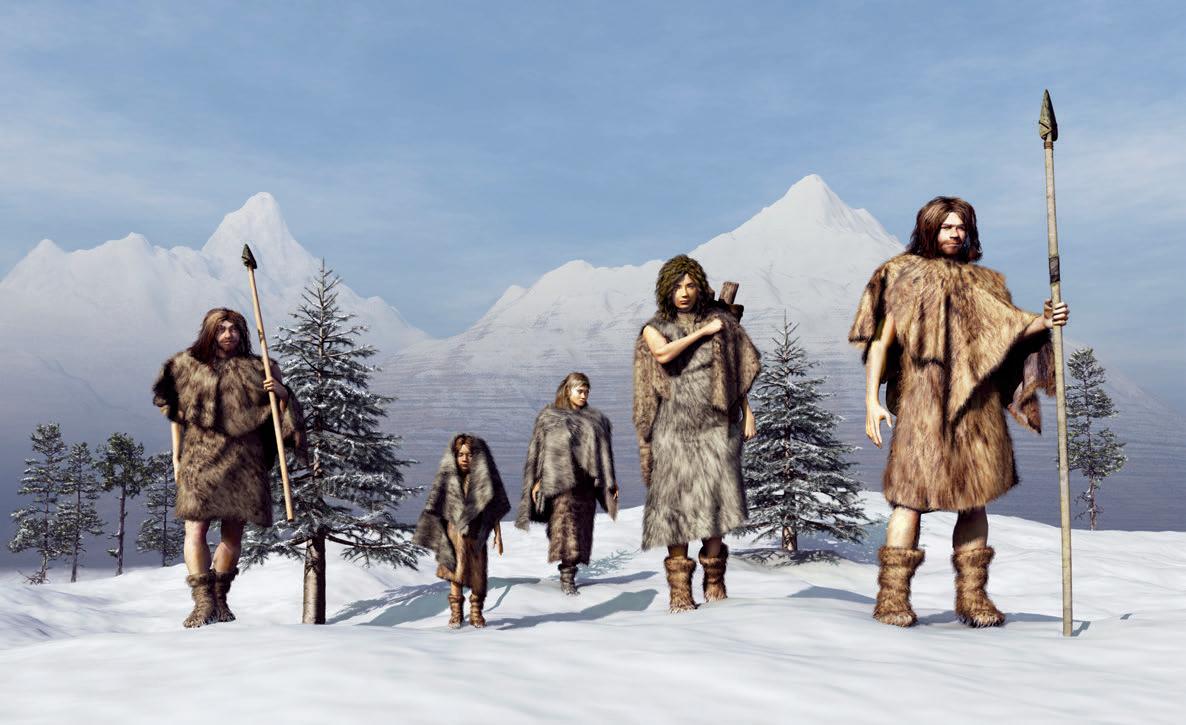
Thousands of years ago, nomadic hunter-gatherers first explored along the banks of the Mississippi River. They traveled in small family groups. They followed the paths of bison and mastodons animals that provided food, clothing, and tools. They gathered what was available from the land through which they traveled. Archaeologists have categorized this pre-Columbian period as the Archaic period. To those prehistoric hunter-gatherers, the Mississippi River was a source of fish, mollusks, and fresh water. It also became an extensive waterway for moving around the interior of the continent.
Around 3,000 B.C.E., the Woodland period began. People of that period still hunted, but they didn't travel as far. They learned to plant maize, beans, and squash. They used the river's mud to make simple clay pots to store their food and seeds. They began to bury their dead in earthen mounds. Around 1 C.E., during what has become known as the Middle Woodland period, the Hopewell culture emerged. At the peak of the Hopewell culture (before 500 C.E.), populations grew. People lived in communities of log houses. The Mississippi River provided them with all they needed: rich land to grow plentiful crops and fish, birds, and animals to hunt.
The Hopewell culture developed a vast exchange system. People traveled extensively on the Mississippi and its tributaries. They reached as far away as New York and Georgia and the Gulf of Mexico. They traded food, feathers, furs, and river pearls. Grizzly bear teeth from the Rocky Mountains, copper from Lake Superior, and conch shells from the Atlantic Ocean all found their way back to Hopewell communities.
Diese Geschichte stammt aus der April 2023-Ausgabe von Cobblestone American History Magazine for Kids.
Starten Sie Ihre 7-tägige kostenlose Testversion von Magzter GOLD, um auf Tausende kuratierte Premium-Storys sowie über 8.000 Zeitschriften und Zeitungen zuzugreifen.
Bereits Abonnent ? Anmelden
Diese Geschichte stammt aus der April 2023-Ausgabe von Cobblestone American History Magazine for Kids.
Starten Sie Ihre 7-tägige kostenlose Testversion von Magzter GOLD, um auf Tausende kuratierte Premium-Storys sowie über 8.000 Zeitschriften und Zeitungen zuzugreifen.
Bereits Abonnent? Anmelden

nellie Bly Journalist
nellie Bly's first newspaper articles appeared in print when she was just 20 years old.

Arabella Mansfield -Lawyer
Arabella Mansfield started out life as Belle Babb (1846-1911). She grew up in a Midwest family that valued education. In 1850, her father left to search for gold in California. He died in a tunnel accident a few years later.

Sarah Josepha Hale Editor
Long before Vogue or Glamour caught women's attention, Godey's Lady's Book introduced the latest fashions.

Louise Blanchard Bethune - Architect
Louise Blanchard Bethune (1856-1915) showed early promise in math. Lucky for her, her father was the principal and a mathematics teacher in a school in Waterloo, New York. Instead of going to school, Louise's father taught her at home until she was 11 years old. She also discovered a skill for planning houses. It developed into a lifelong interest in architecture and a place in history as the first professional female architect in the United States.

Sojourner Truth Speaker
There was a time when slavery wastes abolished the institution over a number of decades. New York abolished slavery in 1827. Isabella Baumfree (c. 1797-1883) was born enslaved in Hurley, New York. When she was nine, she was taken from her parents and sold. She then was sold several more times. Some of her owners were cruel and abused her. During that time, she had several children.

Getting Started
In this editorial cartoon, a young 19th-century woman must overcome the obstacle of carrying a heavy burden while climbing a multirung ladder before she can achieve \"Equal Suffrage.\"

Leonora M. Barry - Investigator
When Leonora M. Barry (1849-1923) was a young girl, her family left Ireland to escape a famine. They settled in New York. Barry became a teacher. In 1872, she married a fellow Irish immigrant. At that time, married women were not allowed to work. So, Barry stayed home to raise their three children.

Finding a New Path
For many Americans, this month's mystery hero represents the ultimate modern trailblazer. She is recognized by just her first name.

The Grimké Sisters Abolitionists
Every night, Dinah was supposed to brush the E hair of her mistress, Sarah Moore Grimké (1792-1873). But one night, 12-year-old Sarah stopped Dinah. She wanted to help Dinah instead. They had to be quiet so they wouldn't get caught. It was 1804 in Charleston, South Carolina. The Grimkés were among Charleston's major slaveholding families. Strict laws regulated the behavior of both master and enslaved people.

Frances Willard Leader
During Frances Willard's lifetime (1839-1898), she was the best-known woman in America: She headed the largest women's organization in the worldthe Woman's Christian Temperance Union (WCTU). In that role, her abilities shone as a social activist, a dynamic speaker, and a brilliant organizer. She educated women on how to run meetings, write petitions, give speeches, and lobby state and federal legislators.